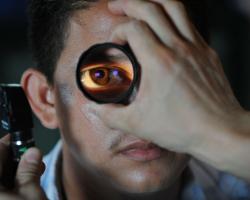Each year from 5 to 6 thousand patients in Poland go into a coma. In most cases this is caused by a severe head injury, heart attack or stroke. However, it normally lasts only up to a few weeks – after that time the patient dies or slips into a different state.
The term coma is often used with reference to people who have been unconscious for a long time, but this is not always the best description of the patient’s state. When in a coma, patients never open their eyes, and their limb movements are only reflexes. This state lasts no more than two to five weeks.
Many comatose patients wake up and recover, but some die as a consequence of brain death. There is also a third group of patients, who neither die nor wake up. After a few weeks these long-term unconscious patients slip from a coma into a vegetative state.
The paradoxes of the mind
It is a still largely uncharted and paradoxical state of the human brain. Vegetative-state patients are considered conscious, but not aware. It is estimated that about 400 patients slip into this state in Poland each year, and one in four is a child.
Vegetative-state patients can have their eyes open, but exhibit no traces of awareness of the outside world or themselves. Like healthy people, they go through the stages of being asleep and awake, but their behaviour is markedly different. When they wake up their eyes wander aimlessly or remain closed.
Patients in that state might groan and grind their teeth. At times they smile, cry, swallow, or clear their throat. They might also grab the hand of the person sitting nearby. In any case, these are reflexes, not deliberate actions. Such behaviour should in no way suggest that the patient’s condition is improving or that he or she is anywhere near waking up.
No contact can be established with vegetative-state patients. Although they can react to people moving around their bed or noises, they fail to perform even the simplest commands, such as “look down" or “pinch my hand" – the only reaction you can elicit from people who still have the faintest traces of consciousness left.
“Miraculous" recoveries
When is it possible for a comatose patient to actually wake up? A year after an accident and a brain injury the chances are very slim. In the case of cerebral hypoxia induced by a heart attack or stroke, this probability drops to zero after six months.
If they survive at all, patients in this condition enter a persistent vegetative state.
That said, cases of incorrect diagnosis do happen. Due to diagnostic difficulties, sometimes the so-called minimally conscious state is mistaken for the vegetative state. Such patients retain the ability to communicate with simple words, facial movements or gestures.
A US patient, Terry Wallis, spent 19 years in a minimally conscious state until in June 2003 he suddenly regained consciousness. Jan Grzebski, a railroad worker from Działdowo, was a different case, although he also woke up after 19 years. It happened on 12 April 2007 at an independent public health care centre in Działdowo. Later he claimed that he had heard and understood every word spoken to him. He had been able to drink and swallow, indicate his needs, pain and breathlessness.
His condition resulted from the so-called locked-in syndrome, which involves the paralysis of the muscles responsible for deliberate movements or aphasia – a disturbance of the comprehension and formulation of language occurring irrespective of the proper functioning of articulatory muscles. Damage to the poles with functions linked to speech might even render an aphasiac incapable of expressing his thoughts with facial movements or gestures.









Comments (0)